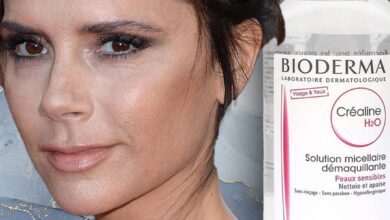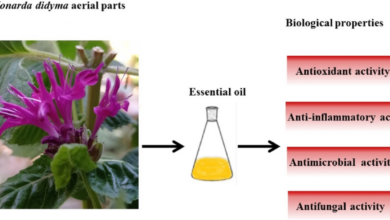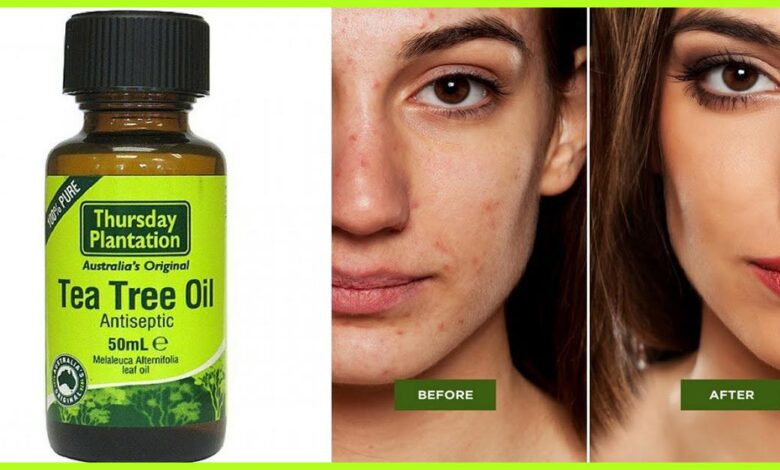
Tea Tree Oil for Acne and Other Infections
Tea Tree Oil for Acne and Other Infections: Ever wondered about the power of nature’s little antiseptic? This amazing essential oil, derived from the Australian tea tree, has been making waves in natural skincare and alternative medicine for its potent antimicrobial properties. From battling stubborn acne breakouts to tackling various infections, tea tree oil’s versatility is truly remarkable.
Let’s dive into the science and explore how this natural remedy can help clear your skin and boost your overall well-being. We’ll cover everything from safe application methods to potential side effects, ensuring you’re equipped with the knowledge to use tea tree oil effectively and safely.
This post will unpack the science behind tea tree oil’s effectiveness, providing a practical guide to using it for acne treatment and other infections. We’ll explore its chemical composition, delve into its mechanism of action, and compare its efficacy to other common treatments. We’ll also address safety concerns and offer practical tips for safe and effective use, backed by scientific research.
Tea Tree Oil Properties and Composition
Tea tree oil, derived from the leaves of the Melaleuca alternifolia tree, has garnered significant attention for its potential therapeutic benefits, particularly in dermatological applications. Its effectiveness stems from a complex chemical composition, a blend of terpenoids that contribute to its diverse properties. Understanding this composition is key to appreciating its mechanism of action and potential limitations.Tea tree oil’s antimicrobial properties are largely attributed to its diverse terpene content.
Tea tree oil’s antiseptic properties make it a popular home remedy for acne and minor skin infections. It’s amazing how many natural solutions exist, but sometimes we need to look at the bigger picture of health, especially as we age. I recently read an interesting article about how an eye test might predict dementia risk; check it out: can eye test detect dementia risk in older adults.
Understanding overall health is key, and while tea tree oil helps with topical issues, proactive care for age-related conditions is equally important.
The oil is a complex mixture of over 100 different compounds, but its major components include terpinen-4-ol (typically 30-48%), α-terpinene (8-18%), γ-terpinene (2-8%), and cineole (0-6%). The exact proportions vary depending on factors like the plant’s age, growing conditions, and extraction methods. These components work synergistically to exert their antimicrobial effects.
Terpene Composition and Antimicrobial Action, Tea tree oil for acne and other infections
The primary active component responsible for tea tree oil’s antimicrobial activity is terpinen-4-ol. This monoterpene alcohol disrupts bacterial cell membranes, leading to cell lysis and death. It achieves this by interacting with the lipids that make up the bacterial cell wall, increasing membrane permeability and causing leakage of essential cellular components. Studies have demonstrated terpinen-4-ol’s effectiveness against various bacteria, including Propionibacterium acnes, a key bacterium implicated in acne vulgaris.
Tea tree oil’s antiseptic properties make it a popular choice for treating acne and minor skin infections. Managing childhood conditions effectively is crucial, and learning about different approaches is key, like those outlined in this helpful article on strategies to manage Tourette syndrome in children. Understanding such strategies helps us appreciate the holistic approach needed for various health concerns, including the simple yet effective use of tea tree oil for skin issues.
Other components, such as α-terpinene and γ-terpinene, also contribute to the overall antimicrobial effect, though to a lesser extent than terpinen-4-ol. Their mechanisms may involve disrupting bacterial enzyme function or interfering with cellular processes. The synergistic interaction of these multiple components enhances the overall antimicrobial potency of the oil.
Topical Application Benefits and Limitations
Topical application of tea tree oil offers several potential benefits for skin conditions like acne. Its antimicrobial properties can help reduce the bacterial load associated with acne lesions, leading to a decrease in inflammation and lesion count. Many studies have shown that tea tree oil is comparable in effectiveness to benzoyl peroxide, a common acne treatment, with some studies even indicating superior results in reducing lesion severity.
However, it’s crucial to acknowledge the limitations. Tea tree oil can cause skin irritation or allergic reactions in some individuals. Diluting the oil with a carrier oil, such as jojoba or coconut oil, is often recommended to minimize the risk of irritation. Furthermore, the effectiveness of tea tree oil can vary depending on the concentration used and the specific skin condition being treated.
It’s essential to conduct a patch test before applying it to a large area of skin, and individuals with sensitive skin should exercise particular caution. While promising, further research is needed to fully elucidate its long-term effects and optimal usage protocols.
Tea Tree Oil for Acne Treatment: Tea Tree Oil For Acne And Other Infections
Tea tree oil, derived from the Australian Melaleuca alternifolia tree, has gained popularity as a natural remedy for acne. Its antimicrobial and anti-inflammatory properties make it a potential treatment option for those seeking alternatives to conventional acne medications. However, it’s crucial to understand the proper application methods and potential side effects before incorporating it into your skincare routine.
Step-by-Step Guide to Using Tea Tree Oil for Acne
Applying tea tree oil directly to acne can be harsh. Always dilute it with a carrier oil like jojoba or aloe vera to minimize irritation. The following steps Artikel a safe and effective application process.
- Cleanse your face: Begin with a gentle cleanser to remove dirt, oil, and makeup. Thoroughly rinse and pat your skin dry.
- Dilute the tea tree oil: Mix a small amount of tea tree oil (see dilution ratios below) with your chosen carrier oil. A common starting point is a 5% dilution (5 drops of tea tree oil to 95 drops of carrier oil).
- Apply to affected areas: Using a cotton swab or clean fingertip, gently dab the diluted tea tree oil directly onto individual acne blemishes. Avoid applying it to large areas of skin or broken skin.
- Allow it to dry: Let the oil absorb into your skin for at least 15-20 minutes before applying any other skincare products.
- Monitor for reactions: Observe your skin for any signs of irritation or allergic reactions. If you experience any adverse effects, discontinue use immediately.
Tea Tree Oil Dilution Ratios
The appropriate dilution of tea tree oil depends on your skin’s sensitivity and the severity of your acne. Starting with a lower concentration is recommended, especially for first-time users.
| Dilution Ratio | Tea Tree Oil (%) | Carrier Oil (%) | Suggested Use Case |
|---|---|---|---|
| 1:9 | 10% | 90% | Sensitive skin, initial application, mild acne |
| 1:19 | 5% | 95% | Moderate acne, general use |
| 1:49 | 2% | 98% | Severe acne (use in conjunction with other treatments), very sensitive skin |
| Undiluted | 100% | 0% | Not recommended for acne treatment due to high risk of irritation |
Comparison of Tea Tree Oil with Other Acne Treatments
Tea tree oil offers a natural alternative to conventional acne treatments like benzoyl peroxide and salicylic acid. Benzoyl peroxide is a potent antibacterial agent that kills acne-causing bacteria, while salicylic acid helps exfoliate the skin and unclog pores. Tea tree oil possesses both antibacterial and anti-inflammatory properties, but its efficacy may be less potent than benzoyl peroxide for severe acne.
Salicylic acid is generally better for preventing breakouts, whereas tea tree oil may be more effective for treating existing pimples. The choice of treatment depends on individual skin type, acne severity, and personal preference.
Potential Side Effects of Tea Tree Oil for Acne
While generally considered safe when diluted properly, tea tree oil can cause side effects in some individuals. These can include skin irritation, redness, burning sensation, or allergic reactions. Allergic reactions can manifest as rashes, itching, or swelling. It’s crucial to perform a patch test on a small area of skin before applying it to your entire face.
If you experience any adverse reactions, discontinue use and consult a dermatologist.
Tea Tree Oil for Other Infections
Tea tree oil’s antimicrobial properties extend beyond acne treatment, showing promise in managing a range of infections. Its effectiveness stems from its diverse chemical composition, particularly the presence of terpinen-4-ol, which exhibits potent antibacterial, antifungal, and antiviral activities. However, it’s crucial to remember that tea tree oil is a complementary therapy and shouldn’t replace conventional medical treatments, especially for severe infections.
Always consult a healthcare professional before using tea tree oil to treat any infection.Tea tree oil’s application in treating various infections is supported by numerous studies, although the strength of evidence varies depending on the specific infection. While some studies demonstrate significant efficacy, others show more modest results, highlighting the need for further research and standardized application methods. Furthermore, the concentration of tea tree oil used and the method of application significantly impact its effectiveness.
Tea Tree Oil’s Efficacy Against Specific Infections
Several studies have investigated tea tree oil’s effectiveness against various infections. While not a cure-all, it shows potential as an adjunct therapy in certain situations.
- Fungal Infections: Tea tree oil has demonstrated antifungal activity against several dermatophytes, the fungi responsible for many common skin infections like athlete’s foot (tinea pedis) and ringworm (tinea corporis). One study published in the
-Journal of Applied Microbiology* showed that tea tree oil effectively inhibited the growth of
-Trichophyton rubrum*, a common dermatophyte. However, the efficacy can vary depending on the specific fungal species and the concentration of tea tree oil used.Further research is needed to establish optimal treatment protocols.
- Bacterial Infections: Tea tree oil exhibits antibacterial activity against a range of bacteria, including
-Staphylococcus aureus* (a common cause of skin infections) and
-Escherichia coli* (a bacterium found in the gut). A study published in the
-Phytomedicine* journal found that tea tree oil was effective in reducing the bacterial load in wound infections. However, the effectiveness against certain bacterial strains might be limited, and resistance development is a potential concern. - Viral Infections: Evidence supporting the antiviral properties of tea tree oil is less conclusive compared to its antibacterial and antifungal effects. While some in vitro studies suggest antiviral activity against certain viruses, more robust clinical trials are needed to confirm its efficacy in treating viral infections in humans. The mechanism of action and specific viruses affected require further investigation.
Tea Tree Oil in Wound Healing and Infection Prevention
The antiseptic and antimicrobial properties of tea tree oil make it a potential candidate for promoting wound healing and preventing infections. Its ability to inhibit bacterial growth can reduce the risk of secondary infections in minor wounds. In some studies, topical application of tea tree oil to wounds has shown a reduction in inflammation and faster healing times.
However, it’s crucial to ensure the wound is thoroughly cleaned before applying tea tree oil and to avoid using it on deep or severely infected wounds. Always consult a healthcare professional for the treatment of significant wounds.
Case Studies and Research Findings
While extensive clinical trials are still ongoing for many applications, several case studies and smaller-scale research projects have demonstrated the potential benefits of tea tree oil in specific infection scenarios. For example, a study on the treatment of tinea pedis (athlete’s foot) showed that a tea tree oil cream was as effective as a standard antifungal cream in reducing symptoms.
Another study highlighted its potential in managing acne vulgaris, showing a significant reduction in lesion counts compared to a placebo. However, these findings need to be replicated in larger, more rigorous clinical trials before definitive conclusions can be drawn. It’s important to note that these are examples, and individual responses to tea tree oil may vary.
Safety and Precautions
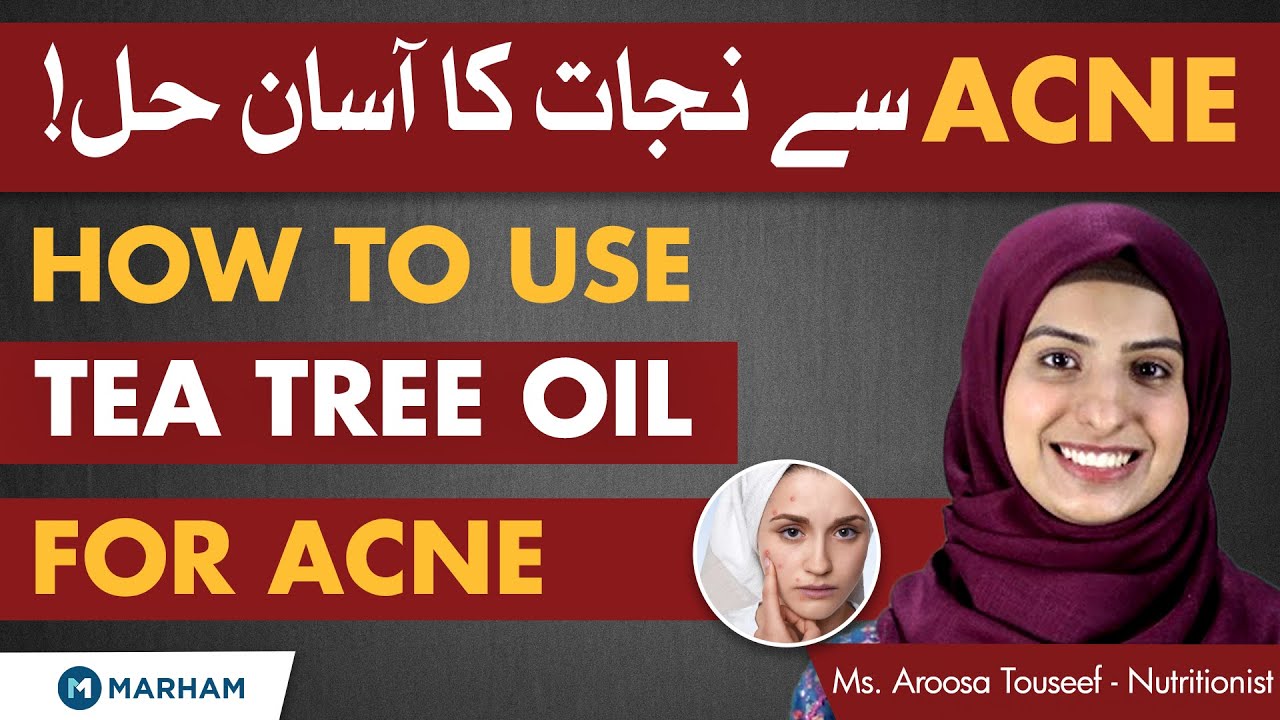
Source: ytimg.com
Tea tree oil, while possessing many beneficial properties, isn’t without potential risks. Understanding these risks and taking appropriate precautions is crucial for safe and effective use. Improper application can lead to skin irritation or other adverse reactions. Therefore, it’s essential to always prioritize safety when incorporating tea tree oil into your routine.Diluting tea tree oil before topical application is paramount.
Undiluted tea tree oil is highly concentrated and can cause severe skin irritation, allergic reactions, or even chemical burns. The ideal dilution ratio depends on the specific application and individual sensitivity, but generally, a dilution of 1-5% tea tree oil in a carrier oil (like jojoba, coconut, or almond oil) is recommended for most applications. Higher concentrations should only be used under the guidance of a healthcare professional.
Dilution Techniques for Tea Tree Oil
A visual representation of appropriate dilution techniques would be helpful. Imagine a small glass vial or bottle. For a 5% dilution, you would add 5 drops of tea tree oil to 95 drops of carrier oil. This is equivalent to 1 part tea tree oil to 19 parts carrier oil. A 1% dilution would involve 1 drop of tea tree oil for every 99 drops of carrier oil.
It’s crucial to accurately measure both the tea tree oil and the carrier oil to achieve the desired concentration. Always mix thoroughly before application. You could visualize this as a simple diagram: a larger circle representing the carrier oil encompassing a much smaller circle representing the tea tree oil, clearly showing the proportion. Another representation could be a graduated cylinder or dropper bottle with markings illustrating the different dilutions.
Tea tree oil’s antiseptic properties make it a popular natural remedy for acne and minor skin infections. It’s amazing how advancements in medicine continue to amaze, like the recent news that the FDA approved clinical trials for pig kidney transplants in humans, as reported by this article. This groundbreaking research highlights the constant search for innovative solutions, much like the ongoing exploration of natural remedies like tea tree oil for various ailments.
Potential Interactions with Other Medications or Substances
Tea tree oil can interact with certain medications and substances. For example, its use alongside blood thinners may increase the risk of bleeding. Individuals using topical corticosteroids or other medications applied to the skin should exercise caution and consult their doctor before using tea tree oil, as it could potentially alter the effectiveness or absorption of other topical treatments.
There is also limited evidence suggesting potential interactions with certain oral medications, though more research is needed in this area. Always inform your doctor or pharmacist about your use of tea tree oil if you are taking other medications.
Contraindications for Tea Tree Oil Use
Several contraindications exist for tea tree oil use. Pregnant and breastfeeding women should avoid using tea tree oil, as there is insufficient data on its safety during these periods. Individuals with known allergies to tea tree oil or related plants in the Melaleuca genus should absolutely avoid its use. Ingestion of tea tree oil should be strictly avoided, as it can cause serious health consequences.
Children should also only use tea tree oil under strict adult supervision and with appropriate dilution. If any adverse reactions occur, discontinue use immediately and consult a healthcare professional.
Research and Clinical Evidence
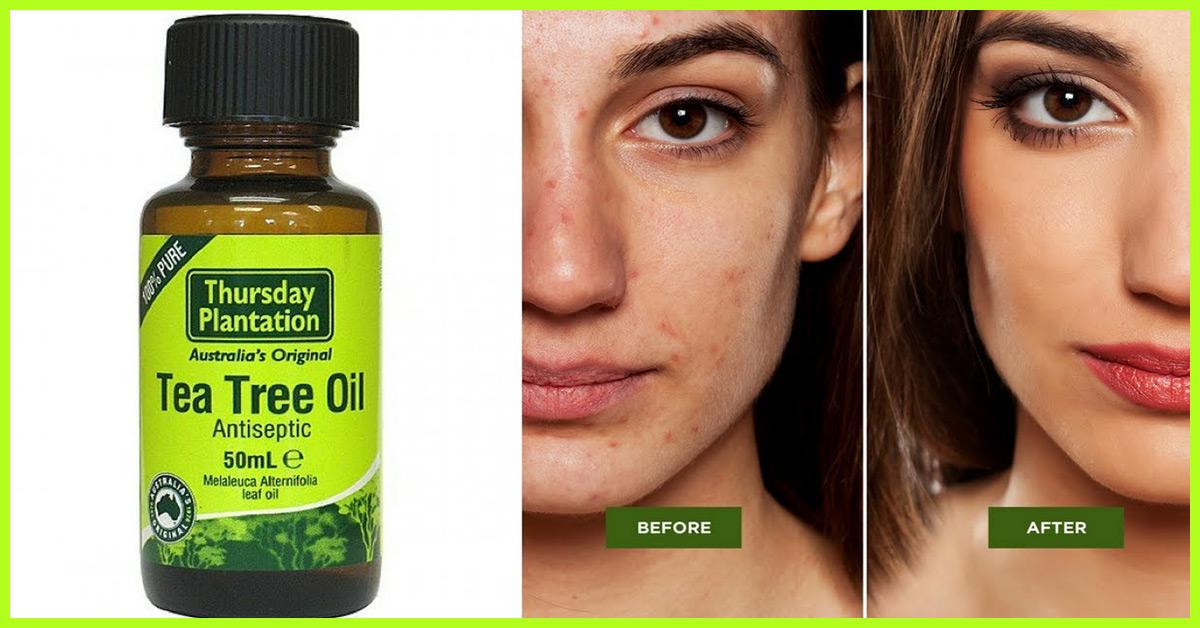
Source: stylecraze.com
The effectiveness of tea tree oil for acne and other infections is a subject of ongoing research, with a body of evidence supporting its use, albeit with limitations. Many studies have investigated its antimicrobial properties and its impact on acne vulgaris, but inconsistencies exist in methodology and results, highlighting the need for more rigorous and standardized research.Studies examining tea tree oil’s efficacy against acne often compare its effectiveness to benzoyl peroxide, a common acne treatment.
Several studies have shown that tea tree oil, in various concentrations (typically 5% solutions), demonstrates comparable efficacy to benzoyl peroxide in reducing lesion counts and improving acne severity. However, the results are not universally consistent across all studies, with some showing less pronounced benefits or no significant difference compared to placebo. This variability may be attributed to differences in study design, participant characteristics, and the specific formulation of tea tree oil used.
Tea Tree Oil’s Antibacterial and Anti-inflammatory Actions
Tea tree oil’s effectiveness against acne and other skin infections stems from its potent antimicrobial and anti-inflammatory properties. Its active components, including terpinen-4-ol, α-terpineol, and cineole, exhibit broad-spectrum activity against various bacteria, fungi, and viruses. Numerous in vitro studies have demonstrated its ability to inhibit the growth ofPropionibacterium acnes*, a bacterium strongly implicated in the development of acne.
The anti-inflammatory effects of tea tree oil contribute to reducing redness, swelling, and inflammation associated with acne lesions. These effects are attributed to the oil’s ability to modulate the inflammatory response, although the precise mechanisms are still under investigation.
Limitations of Current Research and Future Directions
While several studies support the use of tea tree oil for acne and other skin infections, limitations exist. Many studies are small-scale, with limited sample sizes and varying methodologies, making it difficult to draw definitive conclusions. Furthermore, the quality and purity of tea tree oil used in different studies can vary, potentially influencing the results. There is also a need for more long-term studies to assess the sustained effectiveness and potential side effects of tea tree oil use.
Further research is needed to standardize tea tree oil preparations and establish optimal concentrations and application methods for different skin conditions. More rigorous, large-scale, randomized controlled trials comparing tea tree oil to established treatments are essential to solidify its role in acne and other infection management. Additionally, investigations into the specific mechanisms of action and potential interactions with other medications are warranted.
Ending Remarks
So, is tea tree oil a miracle cure-all? While not a replacement for professional medical advice, tea tree oil offers a compelling natural option for treating acne and certain infections. Remember to always dilute it properly, be mindful of potential side effects, and consult with a healthcare professional if you have any concerns or pre-existing conditions. With careful use and understanding, tea tree oil can be a valuable addition to your natural health and skincare routine, offering a powerful, plant-based approach to clear skin and improved well-being.
Give it a try – your skin might thank you!
Helpful Answers
Can I use tea tree oil undiluted on my face?
No, never apply undiluted tea tree oil directly to your skin. It’s highly concentrated and can cause severe irritation, burning, and allergic reactions. Always dilute it with a carrier oil like jojoba or coconut oil.
How long does it take to see results from using tea tree oil for acne?
Results vary, but you might see some improvement within a few weeks of consistent use. Be patient and consistent with your application.
Is tea tree oil safe for all skin types?
No, it’s best to perform a patch test before widespread application, especially if you have sensitive skin. Some individuals may experience allergic reactions.
Can I use tea tree oil during pregnancy or breastfeeding?
It’s best to avoid using tea tree oil during pregnancy or breastfeeding due to a lack of sufficient research on its safety during these periods.
